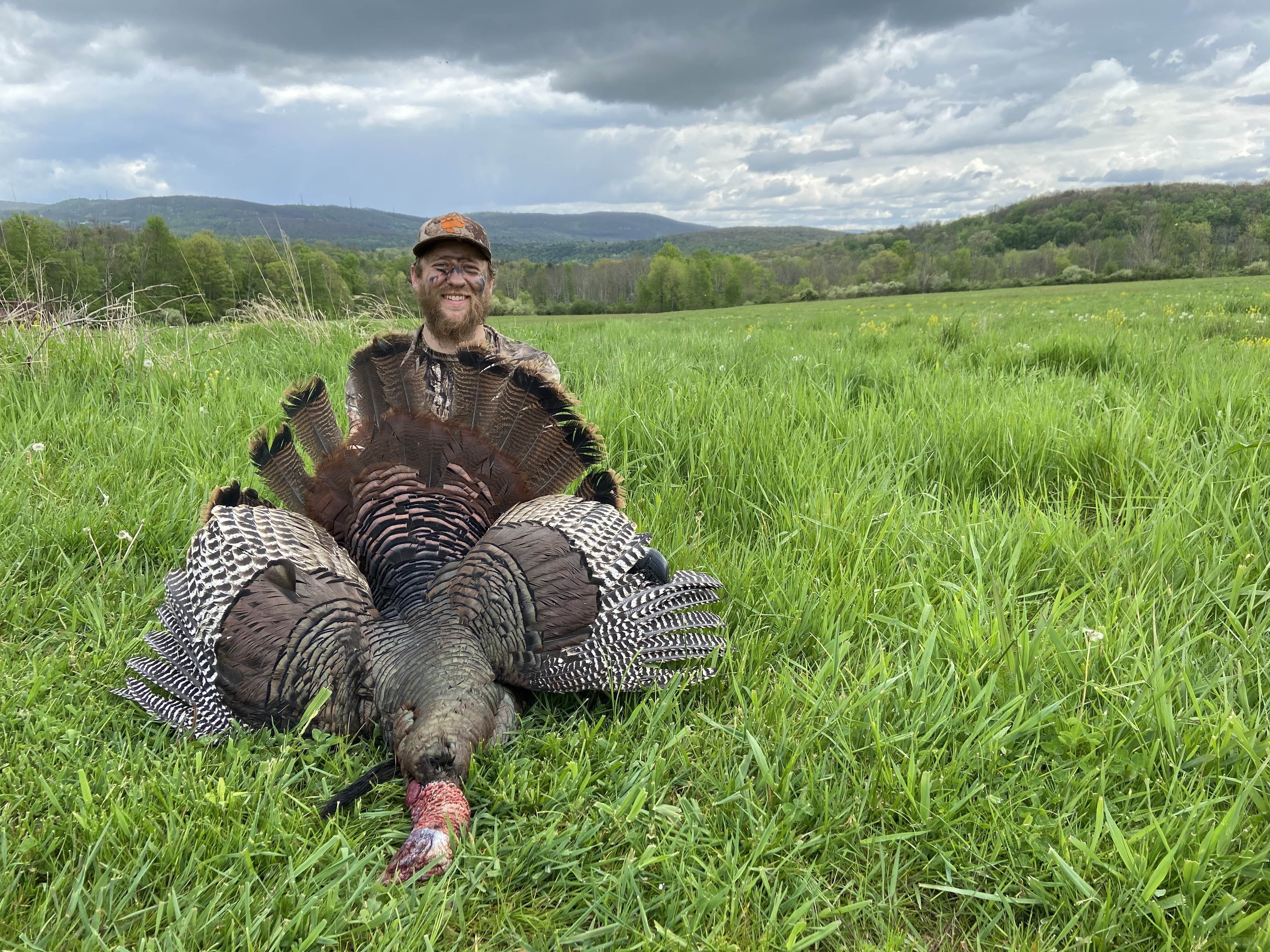
First light has come and gone and you find yourself on the move, covering ground and looking for birds. You rip a crow call and it happens—a tom cuts loose. He’s close, maybe a little too close.
The moments after you locate a bird can be some of the most chaotic a hunter will ever experience, but you shouldn’t panic. Here’s the foolproof method I use to set up quickly and drop the hammer on spring gobblers.

Look for Travel Routes Too often, a hunter locates a bird and immediately plops down at the base of the first tree available. This is how most of those “never got a shot” stories start.
When I hear a bird hammering over the next rise, the first thing I do is figure out which route he might travel by determining the path of least resistance. Frequently, that means logging roads, utility right-of-ways, or well-worn game trails. If there isn’t an obvious route, I pretend I’m taking my grandma shed hunting and try to imagine the path she might walk.
Identify Structure I don’t like to hunt with decoys. I don’t like carrying them, think they’re sort of dangerous, and even worse, they can cause a lot of birds to hang up. For the uninitiated, the hen typically goes to the tom, and if a tom sees a hen decoy, he’ll often end up strutting around just out of range, never coming close enough for a shot. This is why structure is so crucial for my ideal setup.
I almost always choose a spot that requires a tom to come around an obstacle in order to get eyes on the hen. That could be the end of a rock wall, a bump in the terrain, or the edge of a deadfall tree. My goal is to be set up in a way that as soon as the turkey is visible, he’s killable. For that approach, a decoy is unnecessary.
The operative word here is around. In my experience, birds don’t like to hop over large trees, creeks, fences, and other obstacles. It has not been my experience that they take too much convincing to poke their head around an obstacle to see what a hen is up to.
Look for Shooting Lanes Shooting lanes are surprisingly tricky to find. If you have many open lanes in front of you, it normally means you’re too exposed. On the flip side, having just one clear shot often results in a bird living to see another day.
It’s important to define a shooting lane: With a shotgun, I consider any unobstructed opening larger than 2 or 3 feet wide and extending 20 to 40 yards to be a reasonable shooting lane.
I prefer to have three solid lanes with my best shot down what I consider the turkey’s most likely travel route. From there, I assess the second and third most likely travel routes. If I feel like my spot has lanes covering all those routes, that’s where I’ll sit.
Find Your Hide
Everything from owls to feral cats to cougars have it out for turkeys. Because of that, turkeys have evolved to be about as wary as critters come. Make no mistake, a good hide is absolutely crucial to your success. To find the perfect cover, keep in mind the three S’s: shadow, silhouette, and silence.
I like a hide with the sun at my back to keep me in the shadows and a good tree (preferably with some brush beside it) to break up my silhouette. I always make sure to clear out dry leaves, twigs, and anything else that might make noise should I have to shift a little to make the shot.
A Note on Camo Patterns A good camo pattern can go a long way, particularly when hunting early season and open country.
Patterns with strong contrast and bold lines will break up your silhouette and prevent you from blobbing out. Without naming names, suffice it to say there are plenty of patterns that look great up close but appear to be a solid color from a distance.
Next time you find yourself with a hot tom hammering a few hundred yards away and your heart rate climbing, don’t panic. Instead, remember these four steps to the perfect turkey setup and get ready. As you see the edges of his fan start to break the crest of the hill, or a white head poking around a rock wall, you’ll know the feeling all turkey hunters live for.
“Oh man,” you’ll say to yourself, nudging your gun a little higher on your knee. “This is going to happen.”
Feature image via Captured Creative.





